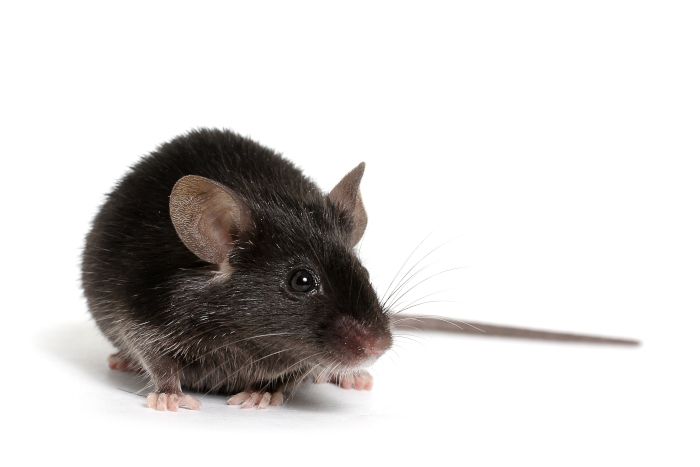Humanized Strategy
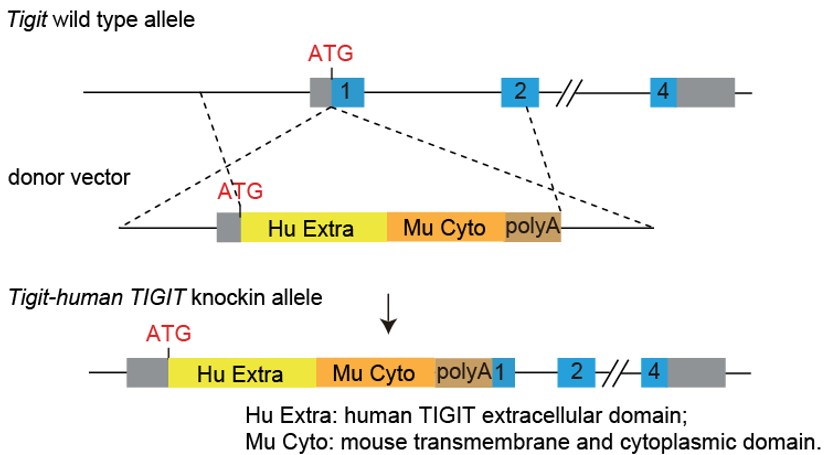
Figure 1. Generation strategy of humanized TIGIT mice. Under the C57BL/6J genetic background, the coding sequences for the extracellular domain of human TIGIT and the transmembrane and intracellular domains of murine TIGIT were inserted into the ATG position of the mouse TIGIT gene, so that the expression of endogenous TIGIT in the mouse was replaced by the expression of humanized chimeric protein.
TIGIT Expression on Polarized CD4+ T Cell
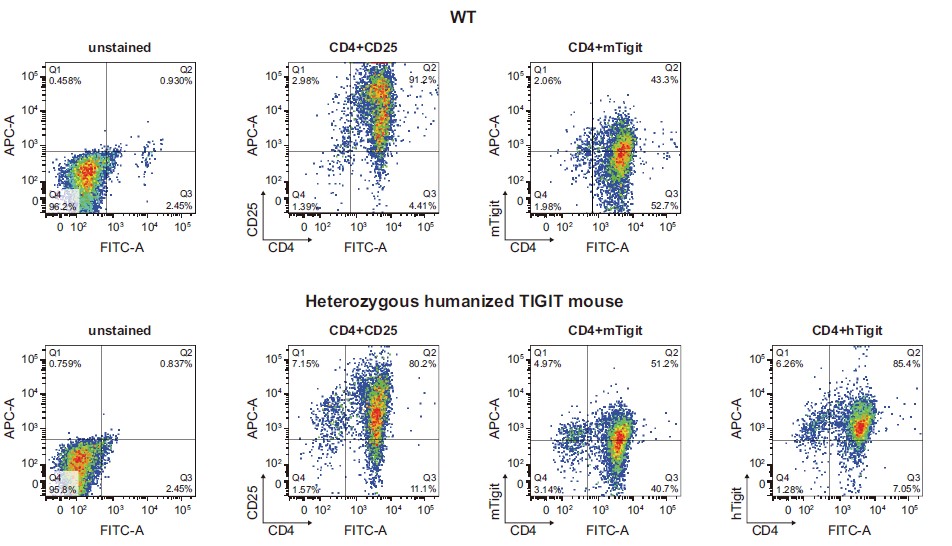
Figure 2. The expression of human TIGIT in the polarized CD4+ T cells derived from humanized TIGIT mice was confirmed by FACS. Naive spleen CD4+ T cells were isolated from heterozygous humanized TIGIT mice. After in vitro stimulation, activation and expansion by cytokines and antibodies, the CD4+ T cells were re-stimulated with PMA/ionomycin, followed by the measurement of human TIGIT expression in the polarized CD4+ T cells by FACS. The results demonstrated an active expression of human TIGIT in polarized CD4+ T cells derived from heterozygous humanized mice, with a comparable expression level to the endogenous murine Tigit.
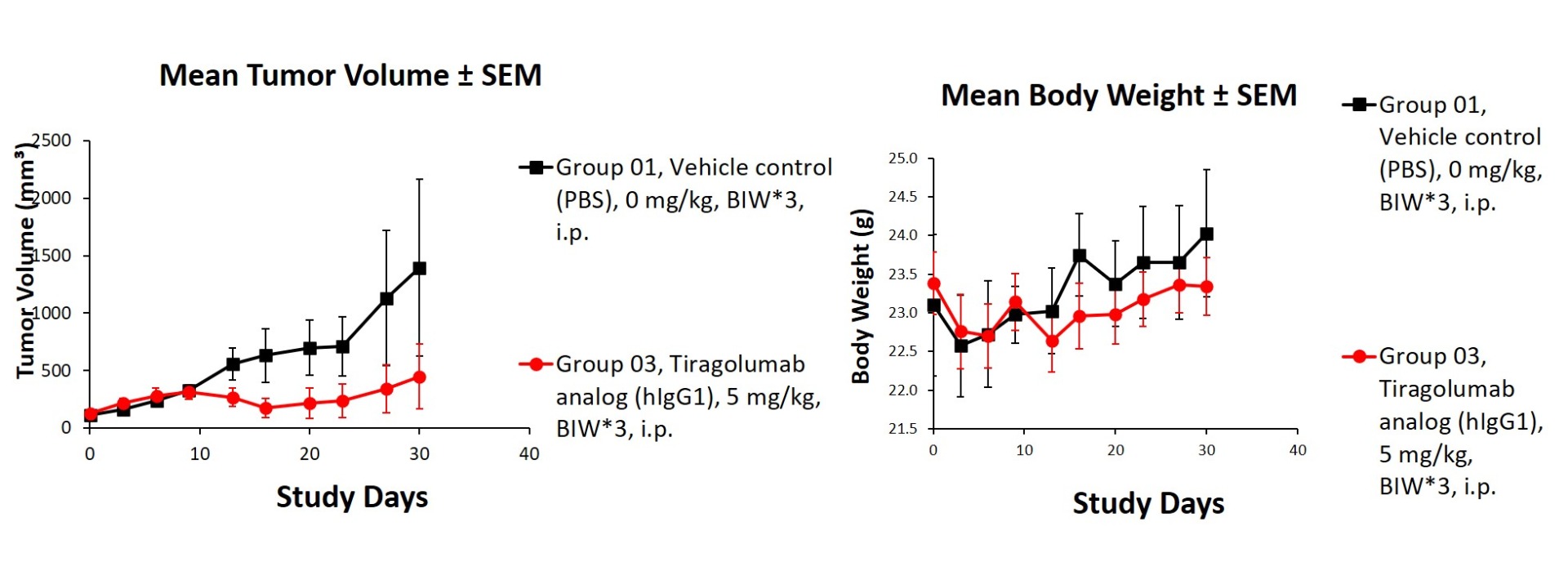
Figure 3. In vivo validation of anti-tumor efficacy in a Hepa1-6 tumor-bearing model of humanized TIGIT mice. Homozygous humanized TIGIT mice were inoculated with Hepa1-6 cells. After the tumors grew to 110 mm3, the animals were randomly assigned into a control group and a treatment group. The results showed a significant anti-tumor effect was observed when the antibody targeting human TIGIT. (Data in partnership with collaborators).
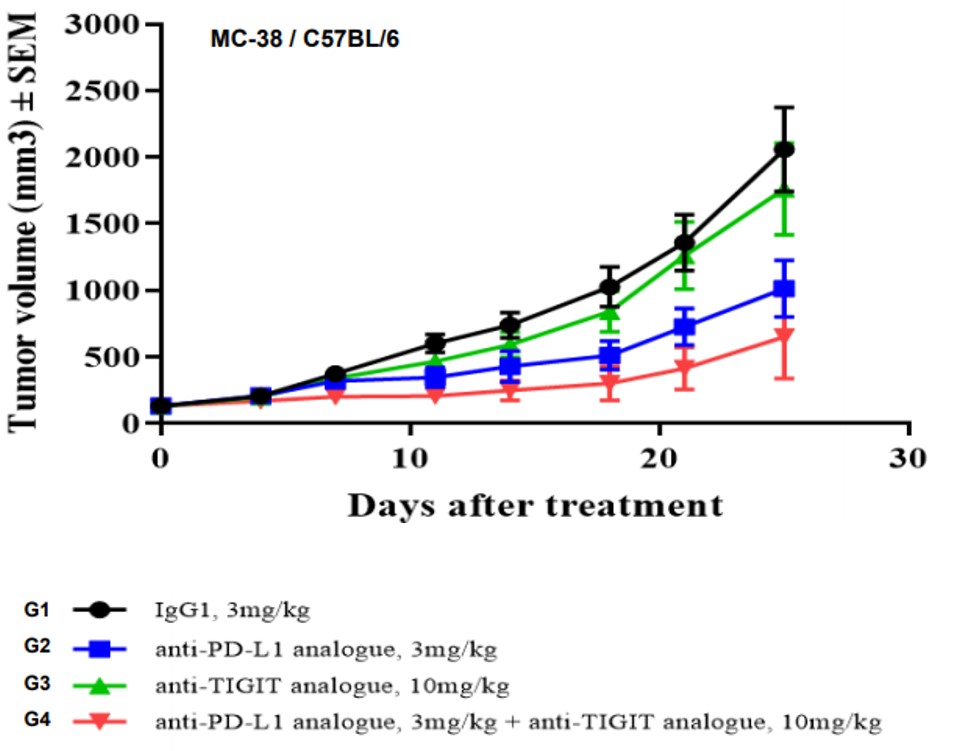
Figure 4. In vivo validation of anti-tumor efficacy in a MC38 tumor-bearing model of humanized TIGIT mice. Homozygous humanized TIGIT mice were inoculated with MC38 colon cancer cells. After the tumors grew to 130 mm3, the animals were randomly assigned into a control group and a treatment group (n=7). The results showed a significant anti-tumor effect was observed when the antibody targeting human TIGIT was administered together with Anti-PD-L1 analogue. (Data in partnership with collaborators).


